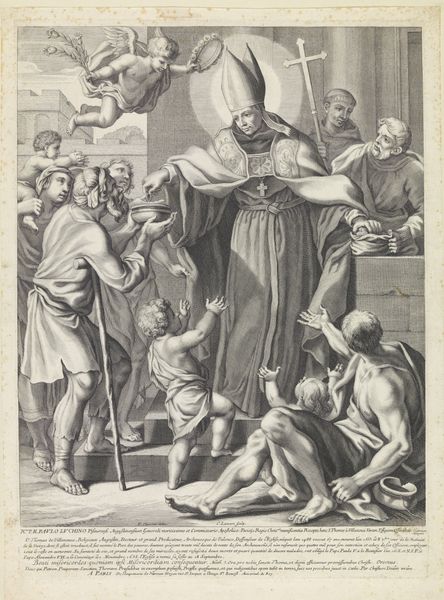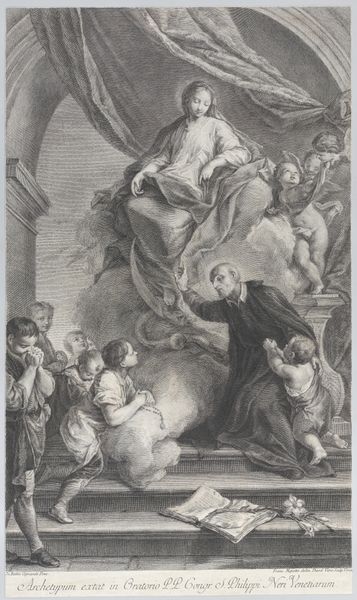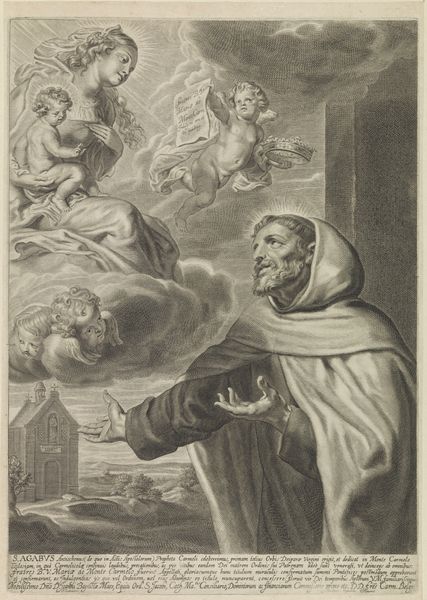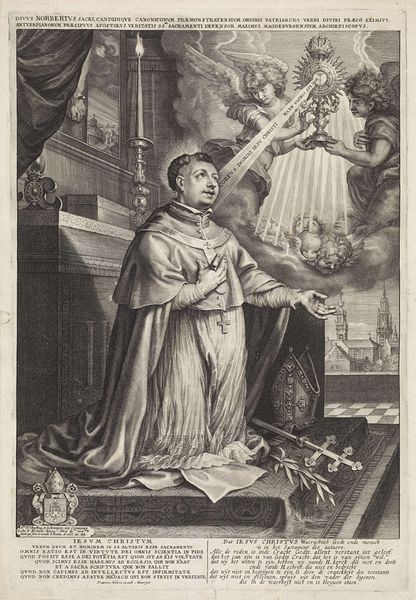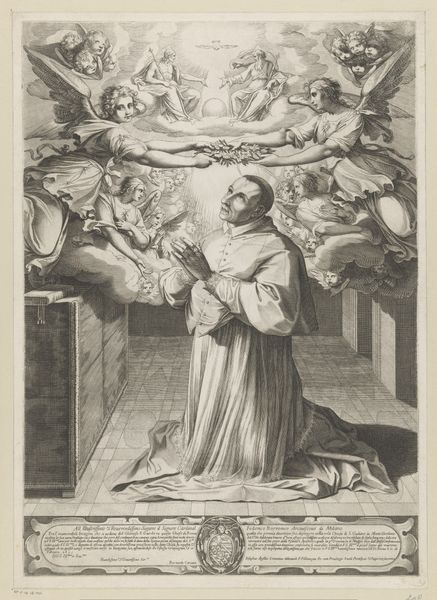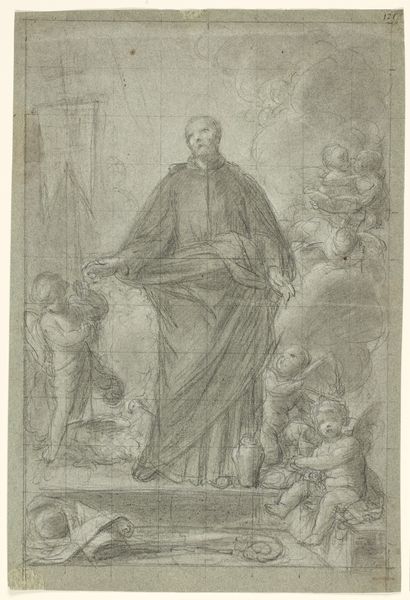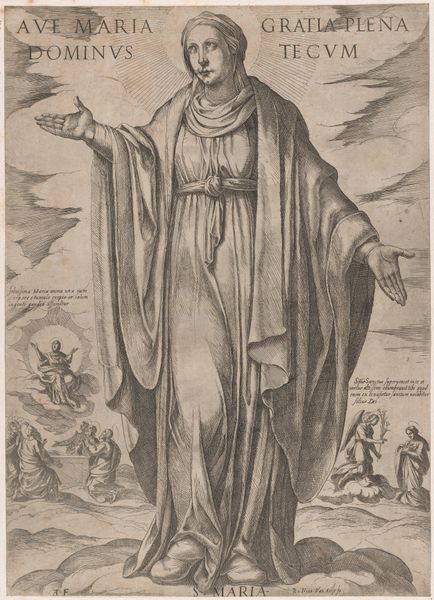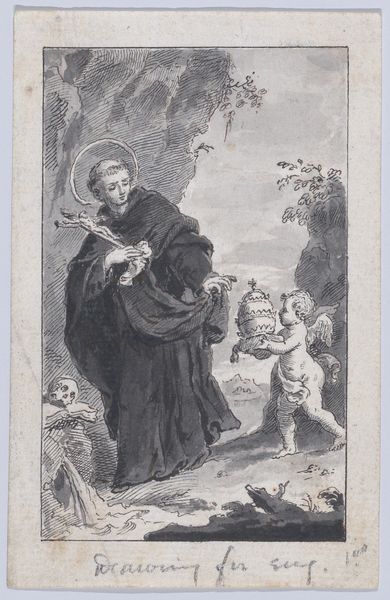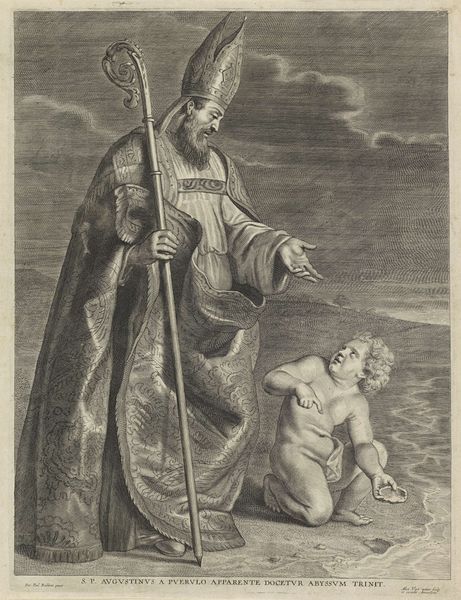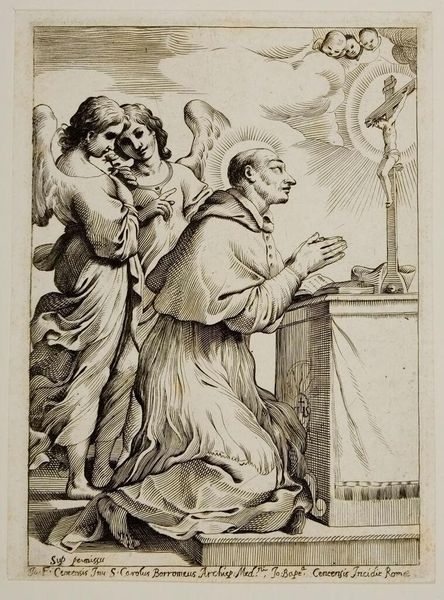
print, engraving
#
portrait
#
allegory
#
baroque
# print
#
old engraving style
#
landscape
#
figuration
#
chiaroscuro
#
line
#
history-painting
#
engraving
Dimensions: height 443 mm, width 312 mm
Copyright: Rijks Museum: Open Domain
Conrad Lauwers made this print, "Vision of Joannes Chisius van Maciaretto," sometime in the 17th century, using engraving techniques. The image is made through a labor-intensive process of incising lines into a metal plate, inking it, and then pressing it onto paper. The stark contrast of light and shadow results from the artist's skillful manipulation of the engraving tools. Look closely, and you can see how the density and direction of the lines create a sense of depth and volume, particularly in the monk's robes and the ethereal figures above. This was a printmaking process demanding considerable skill, patience, and precision, indicating the value placed on craftsmanship during this period. Prints such as this one were crucial for disseminating religious and political ideas, acting as a powerful tool for communication across different social strata. The detailed imagery would have been accessible to a wide audience. The visual style reflects a society deeply invested in both religious devotion and the artistry required to represent it.
Comments
No comments
Be the first to comment and join the conversation on the ultimate creative platform.
